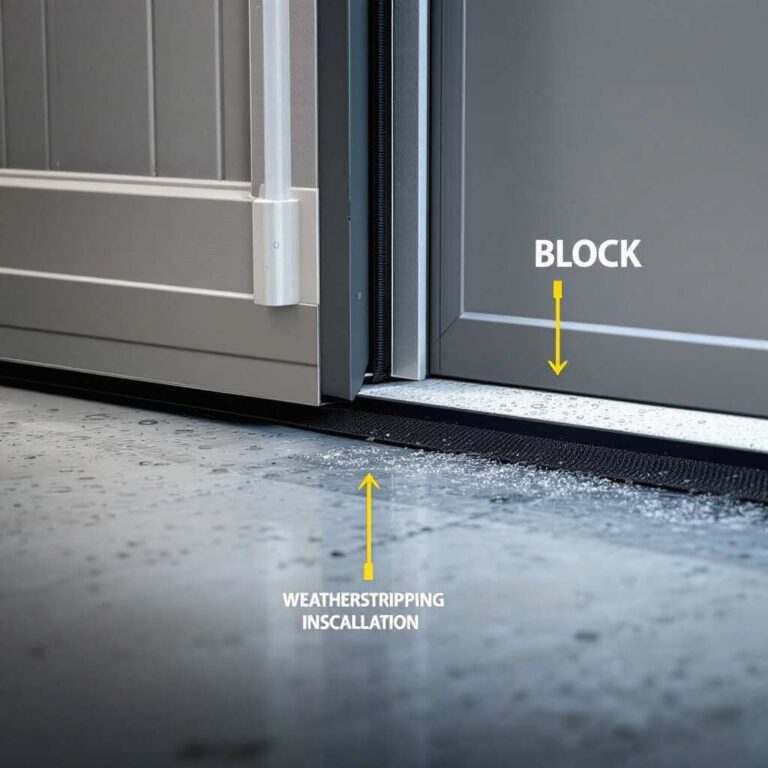Water seeping under your garage door is more than a minor inconvenience—it’s a problem that can lead to costly repairs, property damage, and even potential health risks like mold and mildew. Whether it’s caused by heavy rain, improper drainage, or worn-out seals, tackling this issue promptly can save you a lot of trouble.
Understanding the Problem: Why Water Gets Under Garage Doors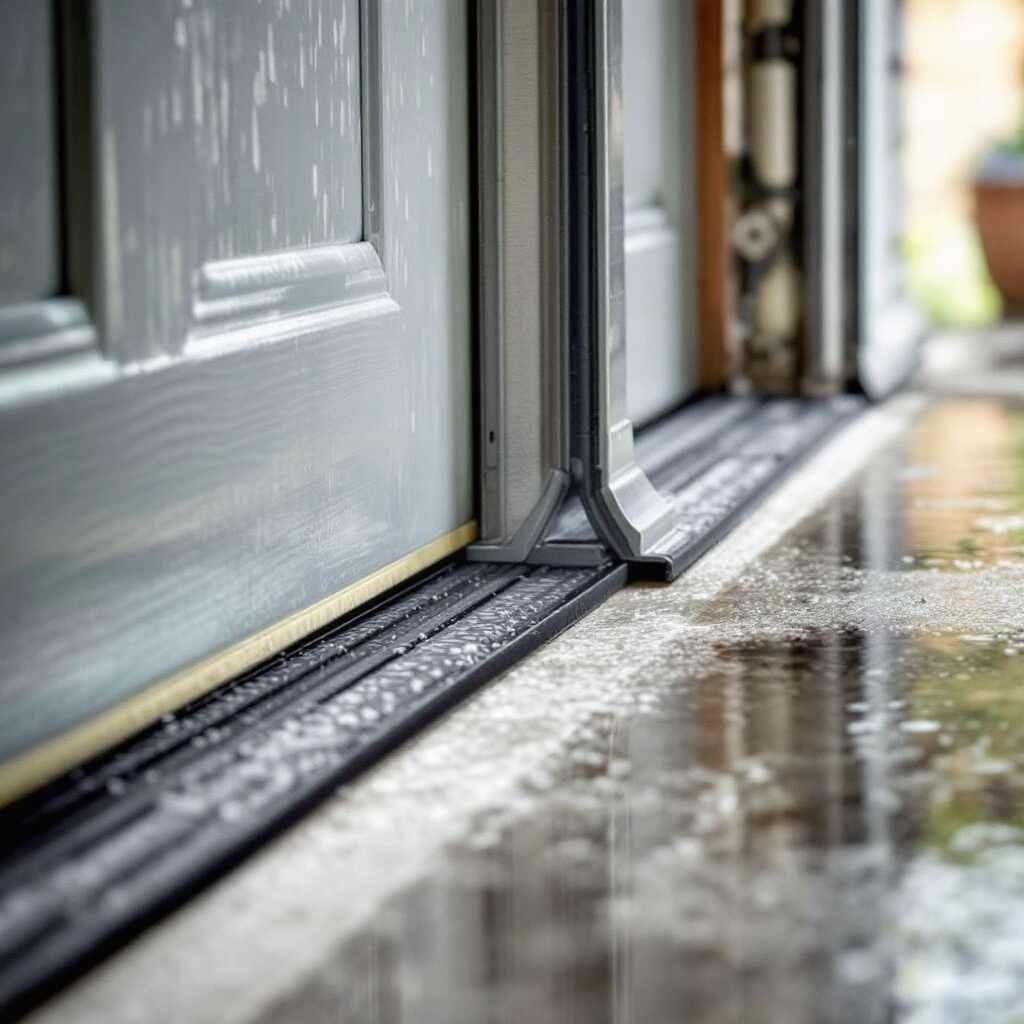
Common Causes of Water Intrusion
Water entering your garage isn’t always due to one specific issue. In most cases, a combination of factors creates the perfect conditions for water intrusion. Here are the most common culprits:
- Improper driveway grading: If your driveway slopes toward your garage rather than away, rainwater and runoff will naturally flow into it.
- Worn or damaged Weatherstripping: Over time, the rubber seal at the bottom of your garage door can wear out, leaving gaps for water to seep through.
- Gaps between the door and the floor: Uneven garage floors or misaligned doors can create small openings where water can enter.
- Inadequate drainage: A lack of effective drainage systems, like gutters or drains, can cause water to pool near your garage.
- Heavy rainfall or snowmelt: Areas with frequent storms or snow accumulation are especially prone to water intrusion.
Potential Damage from Water Entry
Ignoring water intrusion can result in serious consequences for your home and possessions. Here’s what you risk:
- Foundation damage: Standing water can weaken the foundation of your garage, leading to cracks and structural instability.
- Mold and mildew growth: Moisture creates the perfect environment for mold and mildew, which can be hazardous to your health.
- Ruined belongings and vehicles: Water can damage anything stored in your garage, from tools to cars.
- Long-term structural risks: Persistent water exposure can lead to rotting wood, rusted metal, and weakened walls.
Why Garage Doors Aren’t Fully Weathertight
It’s important to understand that most garage doors are not designed to be completely waterproof. While they can resist some weather conditions, they often have small gaps or weak points where water can sneak in. However, with the right solutions, you can significantly reduce water intrusion and protect your garage.
How to Stop Water Getting Under House Garage Door: Step-by-Step Solutions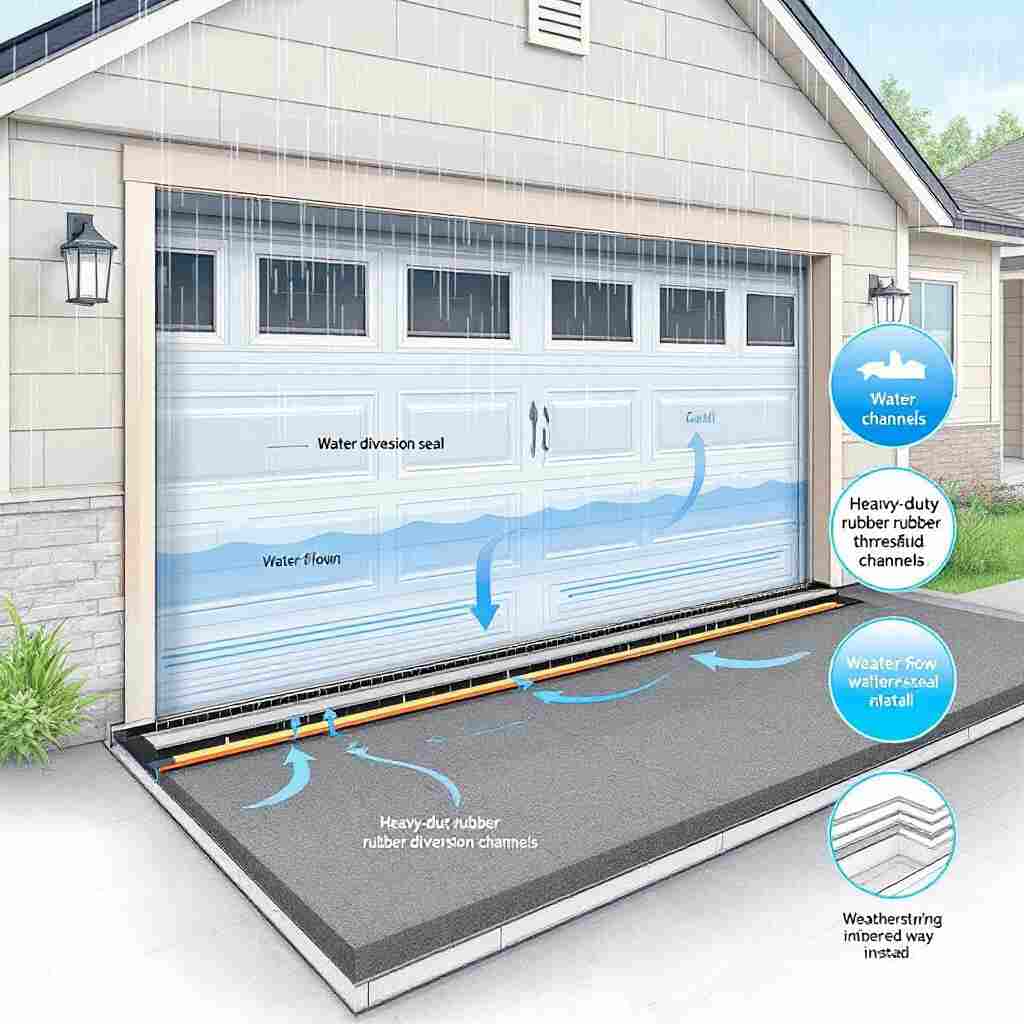
Inspect and Replace Weatherstripping
Weatherstripping acts as the first line of defense against water entering your garage. Over time, this material can crack, lose flexibility, or develop gaps.
You may also read (is it possible to add a garage to my house).
Signs Your Weatherstripping Needs Replacement
- Visible cracks or tears.
- Gaps let in daylight under the garage door.
- Water stains or dampness near the door edges.
How to Replace Weatherstripping
- Remove the old weather stripping using a utility knife or screwdriver.
- Clean the area to remove dirt and debris.
- Measure and cut new Weatherstripping to fit your garage door.
- Attach the new seal using adhesive or screws, ensuring a tight fit along the edges.
Pro Tip: Choose Weatherstripping made of durable, water-resistant materials like vinyl or rubber for better protection.
Install a Garage Door Threshold Seal
A threshold seal is another excellent solution to block water. Unlike Weatherstripping, this seal is installed directly on the floor, creating a raised barrier.
Benefits of a Threshold Seal
- Effective for uneven floors.
- Keeps out dirt, pests, and debris in addition to water.
- Durable and long-lasting.
Installation Steps
- Clean the garage floor where the threshold will be installed.
- Measure and cut the threshold to the appropriate length.
- Use adhesive to secure the seal to the floor.
- Allow the adhesive to cure before testing.
Adjust the Garage Door for a Tighter Seal
A misaligned or unbalanced garage door can create gaps, allowing water to seep.
How to Check for Gaps
- Close the garage door and inspect for any visible spaces between the door and the floor.
- Test the door’s alignment by opening and closing it slowly.
DIY Tips vs. Professional Help
- Minor adjustments, like tightening hinges or bolts, can often be done yourself.
- It’s best to call a professional to avoid damaging the door for major alignment issues.
Improve Garage and Driveway Drainage
Proper drainage is crucial for preventing water from pooling near your garage.
Drainage Solutions
- Install trench or French drains in front of your garage to redirect water.
- Ensure gutters and downspouts direct water away from the foundation.
- Regularly clean drainage systems to prevent clogs.
Address Grading and Landscaping Issues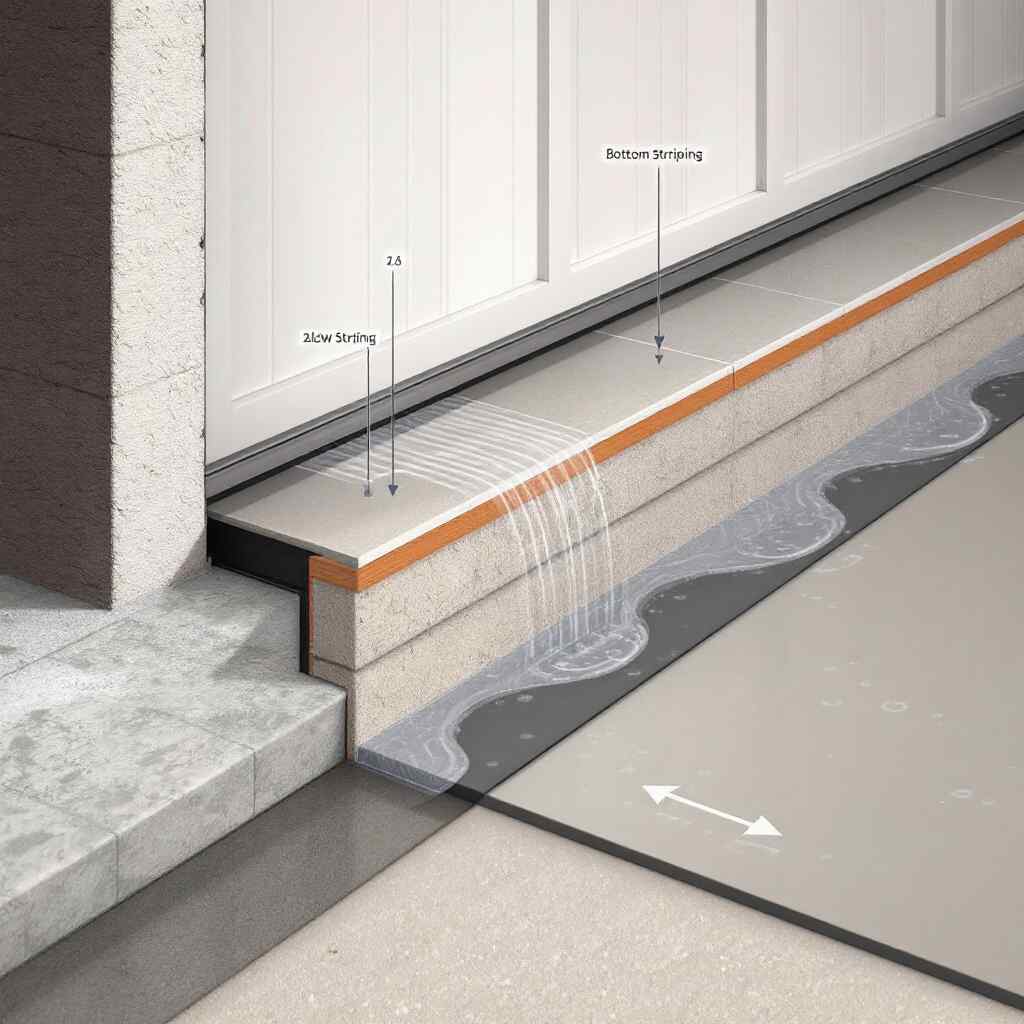
Poor grading around your home can cause water to flow toward your garage.
Solutions for Grading Problems
- Regrade the driveway or surrounding landscape to slope away from the garage.
- Use landscaping techniques like swales or berms to redirect water flow.
- Consult a professional landscaper for large-scale regrading projects.
Apply Waterproof Sealant to the Garage Floor
Applying a waterproof sealant to your garage floor adds extra protection against water.
Steps for Application
- Clean the floor thoroughly.
- Apply the sealant using a roller or brush.
- Allow the sealant to dry completely before using the garage.
Install a Canopy or Awning Above the Garage Door
Adding an overhang, canopy, or awning can help divert rainwater from the garage door.
Tips for Installation
- Choose a design that complements your home’s exterior.
- Ensure the canopy extends far enough to block most rainwater.
Preventative Maintenance: Keeping Water Out Long-Term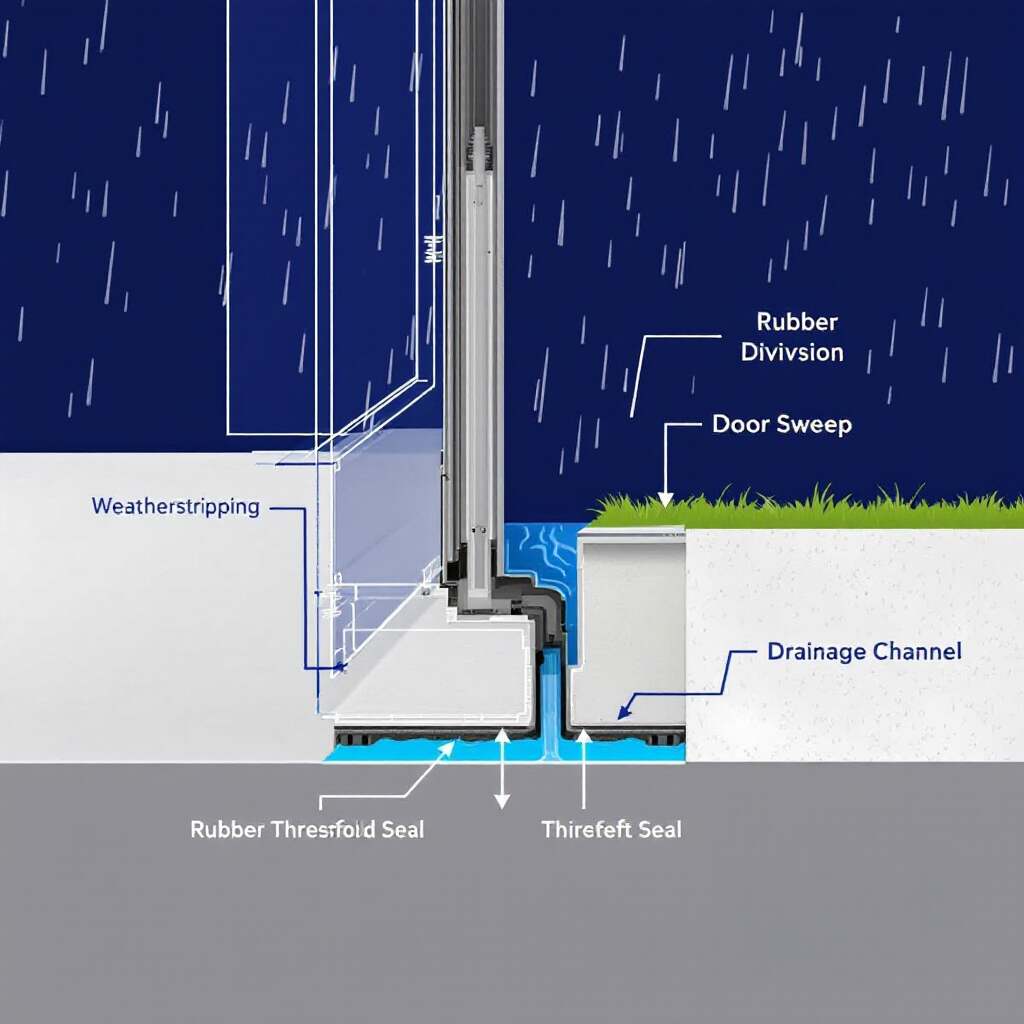
Regular Inspection Checklist
- Check Weatherstripping and seals monthly for wear and tear.
- Inspect for signs of water intrusion after heavy rain.
Cleaning and Upkeep
- Clear gutters, downspouts, and drains regularly.
- Clean the garage door and lubricate its moving parts to maintain a tight seal.
When to Call Experts
- Persistent water issues or structural concerns require professional assistance.
- Annual garage door inspections can help identify and fix potential problems early.
Advanced and Long-Term Solutions
Upgrading to a Water-Resistant Garage Door
Modern garage doors come with enhanced water resistance and durability.
Features to Look For
- Weatherproof materials like fiberglass or insulated steel.
- Sealed edges and advanced Weatherstripping.
Comprehensive Garage Waterproofing Plans
For maximum protection, consider combining multiple solutions. A professional waterproofing specialist can create a tailored plan based on your needs.
You may also read(after being away my house).

